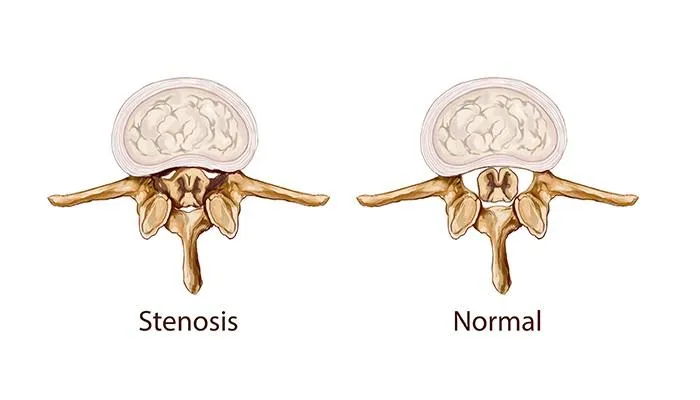What Is Spinal Stenosis and How Is It Treated?
March 6, 2021
Spinal stenosis is a condition that causes the space around the spinal cord to narrow and exert pressure on the nerve roots. Osteoarthritis or wear and tear arthritis is its primary cause. The bone starts rubbing against each other with the cartilage wearing away. As a result, bones may overgrow and intrude into the spinal cord space.
Thickened ligaments, abnormal growths, and herniated disks are other common causes of spinal stenosis. A major trauma to the spine or Paget’s disease may also be the cause of this condition. The condition is known as congenital spinal stenosis if it is because of back issues present at birth. However, an individual is more likely to develop spinal stenosis as he/she ages. The condition is most common among individuals more than 55 years old.
Diagnosing and treating spinal stenosis
Spinal stenosis shows symptoms like back pain and weakness or numbness of the legs. To determine the cause of these symptoms, your doctor will perform a physical exam and will also probably order some tests. Your doctor may want to use imaging tests like X-rays, CT scans and MRI scans for getting a more detailed picture of your spine.
Unfortunately, spinal stenosis cannot be cured. However, you can get treated for relieving the symptoms. The pain and swelling may be reduced by anti-inflammatory medications. If over-the-counter medications do not work, you may be prescribed higher dosages.
You may also require getting cortisone injections. It is an anti-inflammatory drug that can be directly injected into the area of spinal stenosis. This can provide you a significant relief from the pain and inflammation. The effects are temporary but it is not advisable to have more than 3 injections within a year.
Exercises to help with the condition
Spinal stenosis may cause a lot of pain and you might feel it is impossible for you to exercise under such pain. However, for your overall health, movement is very important. You can start by performing stretching exercises multiple times a day. If you have not been working out for some time, you can begin slowly from just a few minutes per day. It is recommended that you exercise at least 3 times a week for 30 minutes .
If you find working out too difficult, you can even try to exercise in a pool. Movement is easier because of the buoyancy of the water, allowing you to get a full range of motion. With regular exercising, your balance and flexibility improves, allowing better movement. It is good for both your physical health and overall well-being.
Your physical therapist or doctor is likely to recommend exercises for strengthening the muscles of your abdomen and back. They will also provide instructions on how to perform these exercises in a safe manner. If you have severe spinal stenosis, you may need extra support and can use a back brace for that. You should see your doctor if your condition is being aggravated by exercising.
Apart from regular movement, you can also get more relaxed and loosen up your back muscles through massage therapy. Another option you can consider is chiropractic manipulation. However, you should discuss this option with your doctor first to make sure it is suited for your condition.
Surgical treatment
If spinal stenosis is impacting your quality of life and nothing else is helping with your condition, you can consider the following surgical options:
- Laminectomy: This procedure involves the surgeon making an incision for accessing your spine, followed by removal or trimming of everything pushing on the nerves, including ligaments and bone spurs. The procedure can also be performed by making multiple small incisions.
- Discectomy: In this procedure, a part of the disk that is compressing the spinal nerves is removed by the surgeon.
- Spinal fusion: This procedure involves stabilizing or locking 2 or more bones so they are unable to move. A bone graft from the pelvic bone or metal hardware is used for this purpose. Bending may become harder after you undergo spinal fusion, but its intention is to reduce pain.
These surgical options do not fully cure spinal stenosis and the symptoms may show up again. After undergoing any back surgery, it is recommended to undergo physical therapy to regain flexibility and strength.
NOTICE BOARD
CONTACT US
CONTACT US
 Book Appointment
Book Appointment


.svg)
.svg)
.svg)
.svg)








